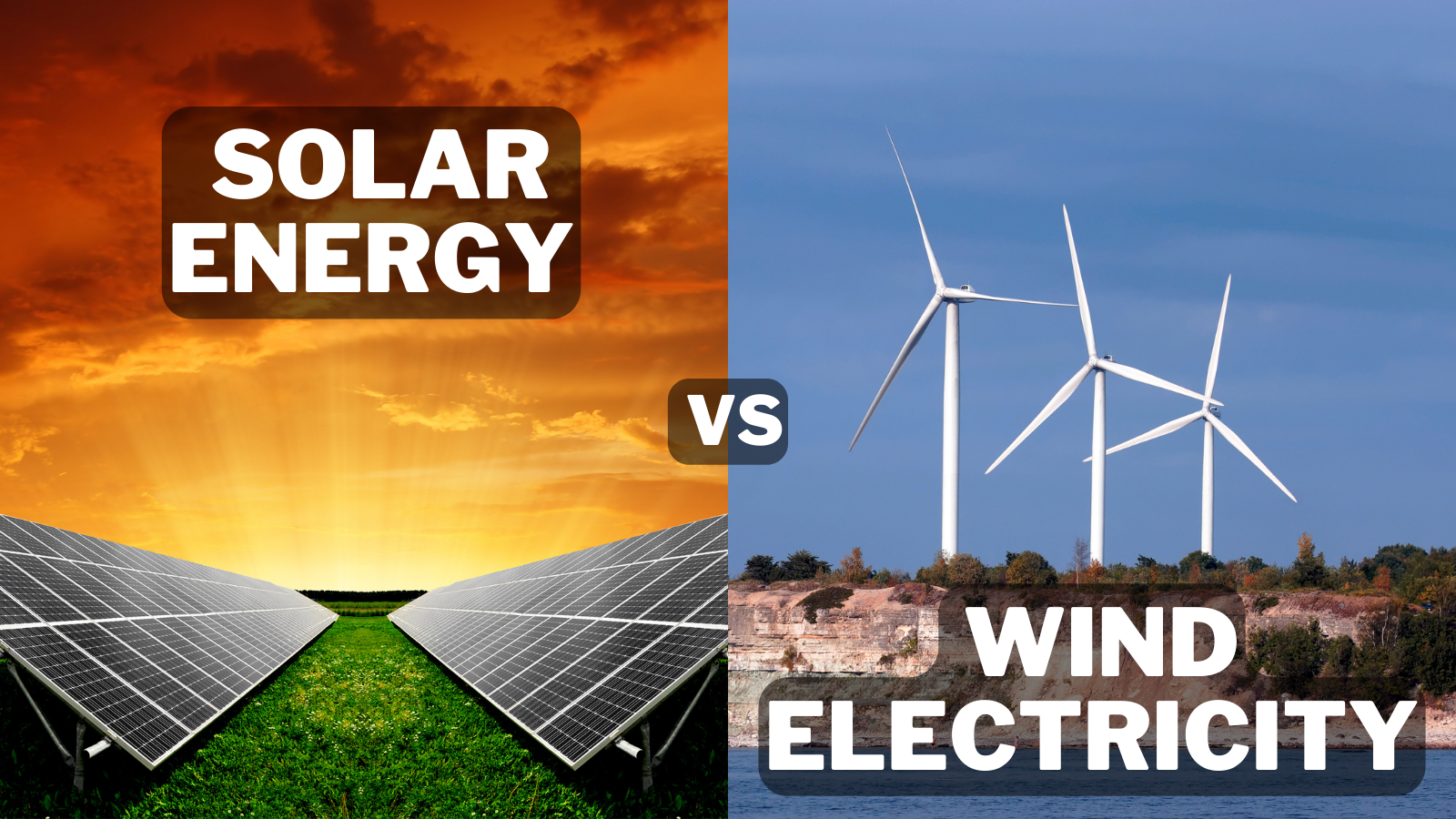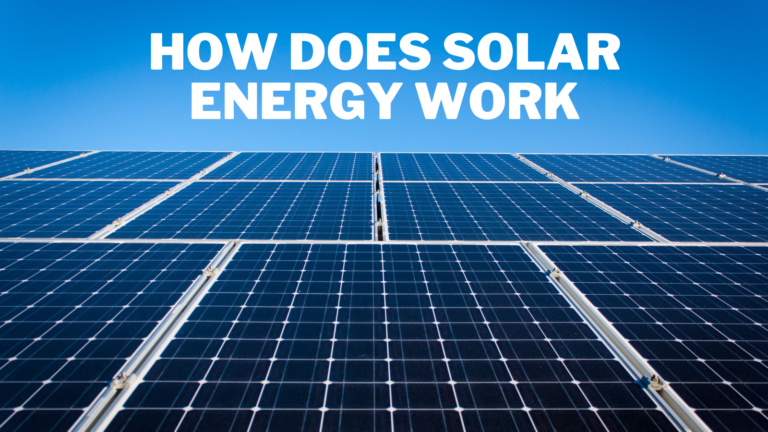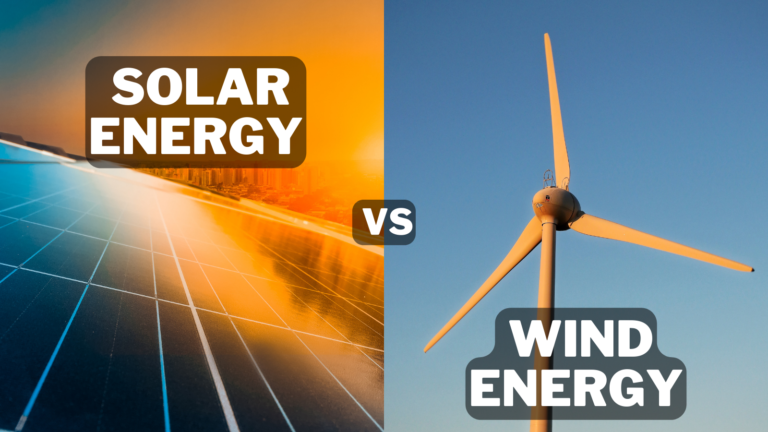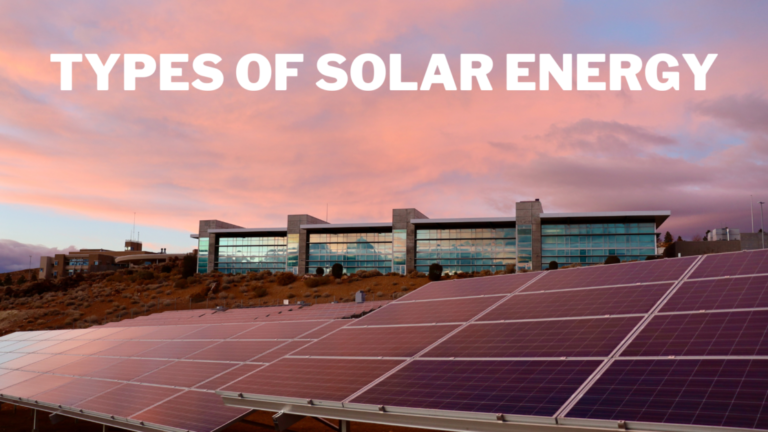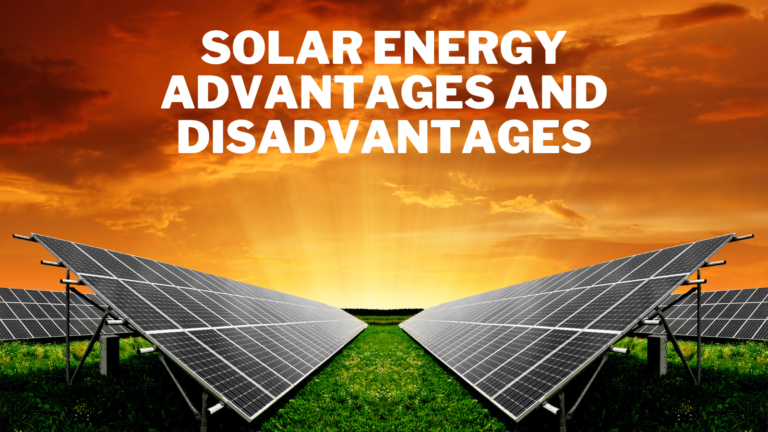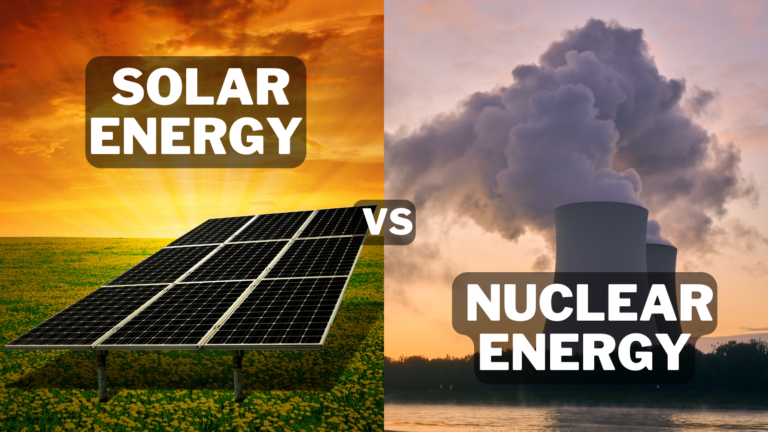Solar Energy vs Wind Electricity
Solar Energy vs Wind Electricity
Renewable energy sources have gained much traction in recent years as people become more conscious of the impact of traditional energy sources on the environment. Solar and wind energy are two of the most popular forms of renewable energy.
Both sources offer numerous benefits, but they also have unique advantages and disadvantages. This blog post will compare and contrast solar energy and wind electricity to help you better understand the differences.
Whether you want to reduce your carbon footprint or invest in renewable energy, this article will provide valuable insights into the pros and cons of solar and wind power.

What Is Solar Energy?
Solar energy is a form of renewable energy derived from the sun. It is a clean and abundant source of energy that can be harnessed in various ways to generate electricity and heat for homes, businesses, and communities.
Solar energy is produced when solar panels convert the sun's light and heat into electrical energy. The panels comprise photovoltaic (PV) cells that convert sunlight into direct current (DC) electricity. This electricity is then converted into alternating current (AC) to power homes and businesses.
One of the key benefits of solar energy is that it does not produce emissions or greenhouse gases, making it an environmentally friendly energy source. It is a relatively simple and low-maintenance energy source, with most solar panels having a 25-30 years lifespan.
Furthermore, the cost of solar energy has decreased significantly in recent years, making it more accessible and affordable for households and businesses.
However, solar energy also has its drawbacks. One of the main limitations is that it is only available during the day when the sun is shining, so it cannot provide a continuous energy source.
Furthermore, solar panels can be expensive to install and require a lot of space to generate significant energy. Finally, the efficiency of solar panels can be impacted by weather conditions, shading, and dust accumulation.
Overall, solar energy is a promising form of renewable energy that offers many benefits. As technology advances, solar energy will likely become even more accessible and affordable, helping to drive the transition towards a more sustainable energy future.
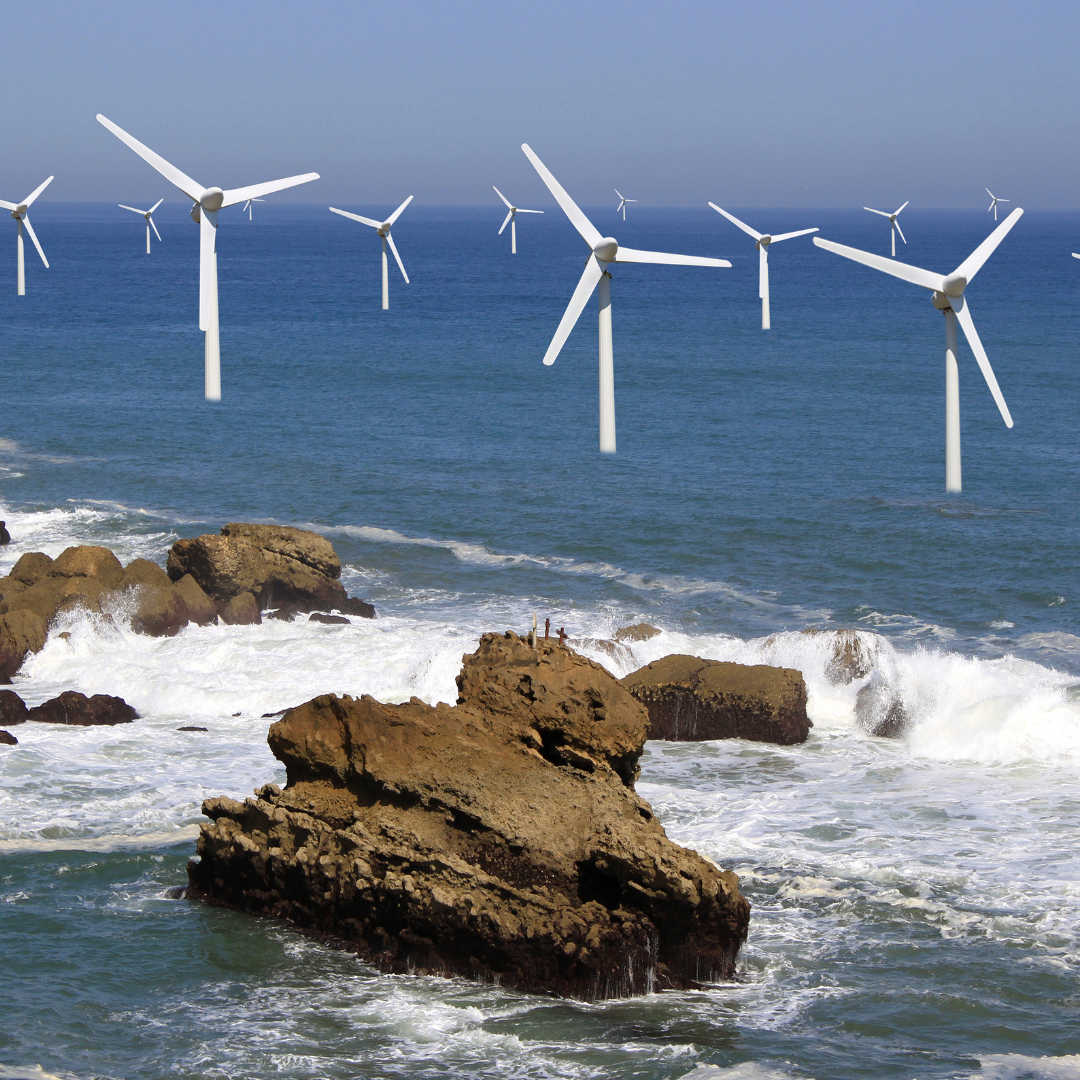
What Is Wind Electricity?
Wind electricity, also known as wind energy, is a form of renewable energy that harnesses the power of the wind to generate electricity.
Wind turbines convert the wind's kinetic energy into mechanical energy, which is then converted into electrical energy. This electricity can be used to power homes, businesses, and communities.
Wind electricity is a clean and abundant energy source, producing no emissions or greenhouse gases. It is also a relatively low-maintenance energy source, with wind turbines having a 20-25 years lifespan.
Furthermore, wind electricity costs have decreased significantly in recent years, making it more accessible and affordable for households and businesses.
One of the key benefits of wind electricity is that it is a continuous energy source, making it a reliable and stable form of energy generation.
Additionally, wind energy can be generated on a large scale, making it a cost-effective option for large energy consumers. Furthermore, wind energy can be generated in remote areas where it is difficult to access other forms of energy, making it an important option for rural communities.
However, wind electricity also has its drawbacks. One of the main limitations is that wind speed and direction can be unpredictable, meaning that wind energy generation can be inconsistent.
Furthermore, wind turbines can be noisy, visually intrusive, and impact wildlife, particularly birds and bats. Additionally, wind energy can only be generated in areas with sufficient wind speeds, meaning that not all regions are suitable for wind energy generation.
Overall, wind electricity is a promising form of renewable energy that offers many benefits. As technology advances, wind energy will likely become even more accessible and cost-effective, helping to drive the transition towards a more sustainable energy future.

Types Of Solar Energy
There are several types of solar energy, each with its unique advantages and disadvantages. Some of the most common types of solar energy include:
1. Photovoltaic (PV) Solar Energy
This is the most common type of solar energy and involves using photovoltaic (PV) cells to convert sunlight into direct current (DC) electricity. This electricity is then converted into alternating current (AC) electricity used to power homes and businesses.
2. Concentrated Solar Power (CSP)
This type of solar energy involves using mirrors or lenses to concentrate the sun's light and heat onto a small area, which is then used to generate steam to power turbines and generate electricity.
3. Solar Thermal Energy
This type of solar energy involves using solar collectors to absorb the sun's heat and transfer it to a fluid, which is then used to heat water or other liquids. This can be used for residential and commercial heating and cooling, as well as for industrial processes.
4. Solar Architecture
This type of solar energy involves the integration of solar panels or other forms of solar energy collection into the design of buildings and structures. This can provide energy for heating, cooling, and lighting and can help reduce the building's overall energy consumption.
5. Passive Solar Energy
This type of solar energy involves building design and orientation to maximize the use of natural light and heat from the sun. This can be used to reduce energy consumption for heating and cooling and can also be used to provide natural light for buildings.
Each type of solar energy has its unique set of advantages and disadvantages, and the most appropriate type of solar energy will depend on the specific needs and requirements of the user.
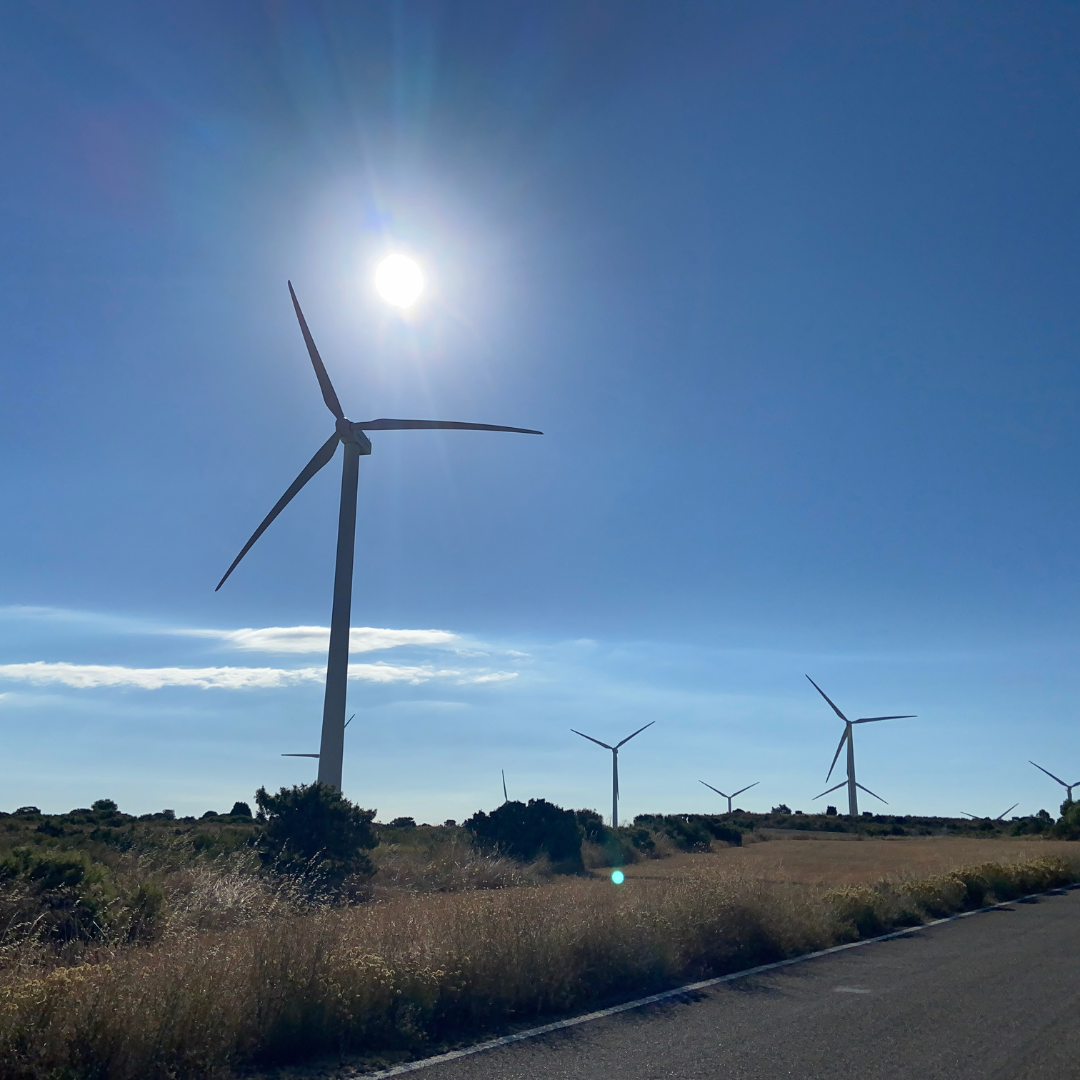
Types Of Wind Electricity
There are two main types of wind electricity: onshore wind energy and offshore wind energy.
1. Onshore Wind Energy
Onshore wind energy involves the installation of wind turbines on land, typically in rural or semi-rural areas. This type of wind energy is relatively simple and inexpensive to install and can be easily integrated into existing energy grids.
However, local weather patterns, topography, and the proximity of homes and businesses can also impact onshore wind energy, affecting its efficiency and effectiveness.
2. Offshore Wind Energy
Offshore wind energy involves the installation of wind turbines in the ocean, typically several miles from the shore. This wind energy is less impacted by local weather patterns and topography and can be more consistent and reliable than onshore wind energy. However, offshore wind energy is more expensive to install and maintain and can impact marine life and the environment.
Both onshore and offshore wind energy have unique advantages and disadvantages, and the most appropriate type of wind energy will depend on the specific needs and requirements of the user. As technology advances, wind energy will likely become even more accessible and cost-effective, helping to drive the transition towards a more sustainable energy future.
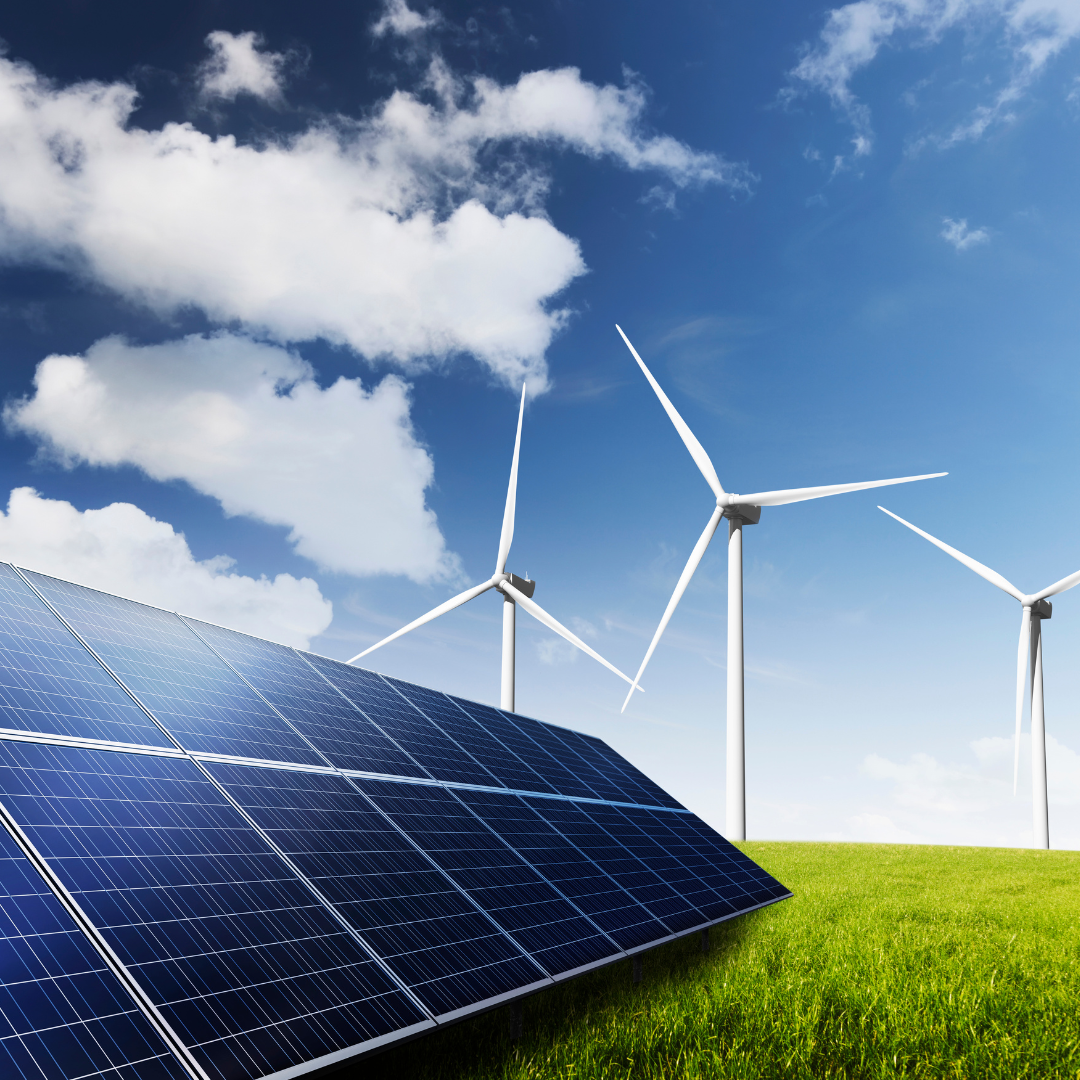
Solar Energy vs Wind Electricity
Solar energy and wind electricity are two of the most widely used forms of renewable energy, each offering unique benefits and challenges. This blog post will look at the differences between solar energy and wind electricity and explore each energy form's advantages and disadvantages.
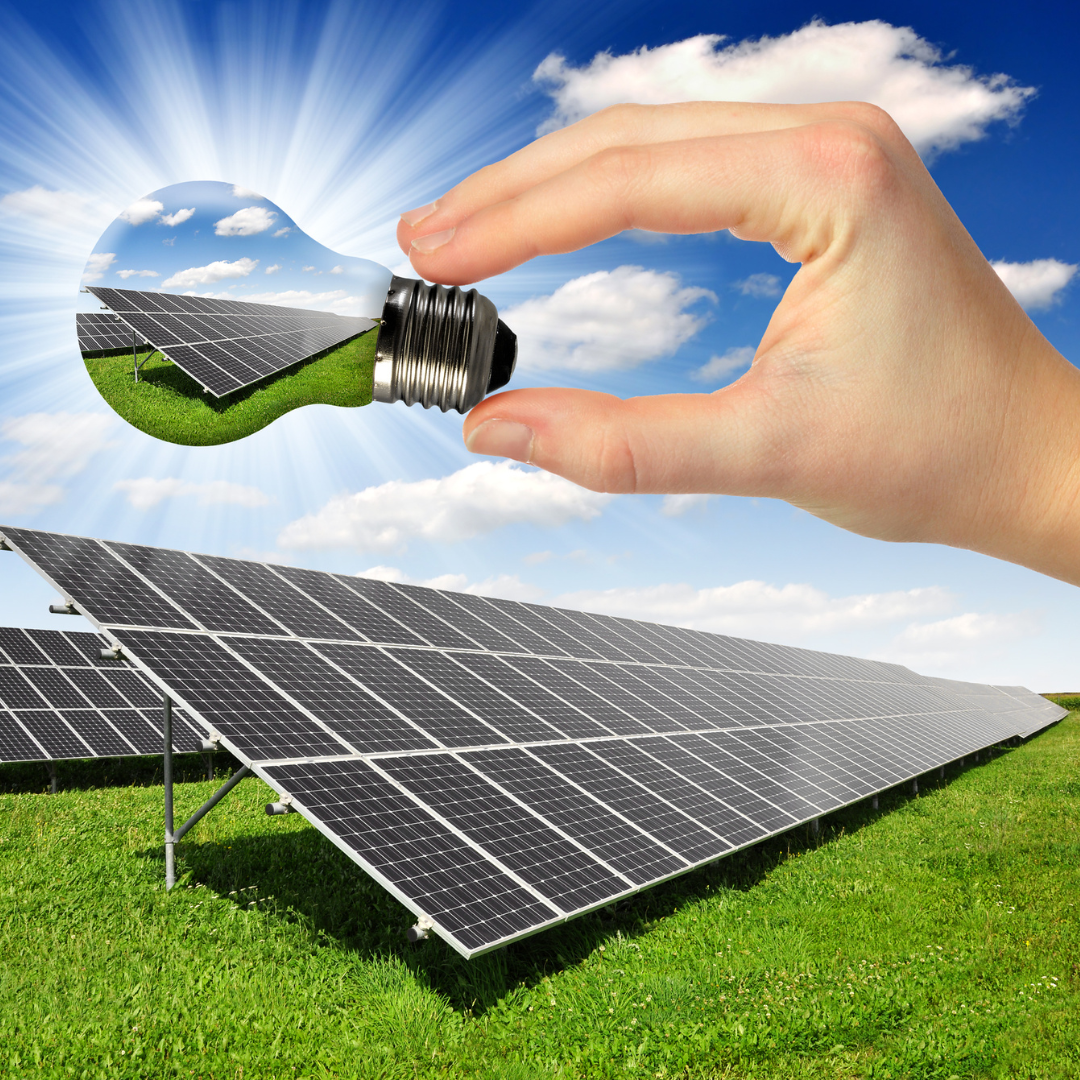
Solar Energy
Generation
Photovoltaic (PV) cells are the basic building blocks of a solar energy system. They are made from silicon and other materials that allow them to convert sunlight into direct current (DC) electricity. The photovoltaic cells are combined into panels and then installed on rooftops or on large-scale solar farms.
The conversion of sunlight into electricity is based on the photovoltaic effect, which was first discovered in the 19th century. The photovoltaic effect is the process by which photons from sunlight knock electrons into a higher energy state, generating electricity.
In a solar panel, the photovoltaic cells are connected in a series, forming a circuit. The direct current (DC) electricity the photovoltaic cells generates is then passed through an inverter, which converts the DC electricity into alternating current (AC). This AC electricity can then be used directly or stored in batteries for later use.
Solar panels are designed to be durable, low-maintenance, and can last for decades. They are also designed to be highly efficient, with the latest technology capable of converting up to 22% of the sun's energy into electricity.
Overall, the use of photovoltaic cells and solar panels is a critical component of the generation of solar energy, making it possible to harness the sun's power and convert it into clean, renewable energy that can be used to power homes and businesses.
Location
The amount of solar energy that can be generated depends on several factors, including the amount of sunlight available and the angle at which the sun's rays strike the solar panels.
In general, regions with high levels of sunlight, such as deserts and tropical areas, are most effective for solar energy generation. This is because the sun is more directly overhead in these areas, providing more direct sunlight for the solar panels to convert into electricity.
However, solar panels can still generate electricity in areas with lower levels of sunlight, such as cloudy or partially cloudy regions. While the panels' efficiency may be reduced in these areas, they can still produce significant electricity. For example, in some cloudy parts, solar panels can still generate up to 60-70% of their maximum output.
Additionally, advances in solar panel technology have made it possible for solar panels to generate more electricity even in lower-light conditions. For example, some newer panels have been designed to be more efficient at converting indirect sunlight into electricity, making it possible to generate more electricity even in cloudy conditions.
In general, the location of a solar energy system is an important factor to consider when planning a solar energy project. It is important to determine the amount of sunlight available in the area and consider factors such as the angle at which the sun's rays strike the solar panels and the amount of shade that may affect them. Considering these factors makes it possible to determine the most effective location for a solar energy system and maximize the electricity generated.
Cost
The cost of solar energy has decreased significantly in recent years, making it a more accessible and cost-effective option for homeowners and businesses. This price decrease is due to several factors, including technological advances, increased competition in the solar energy industry, and economies of scale.
The cost of solar panels has fallen dramatically in recent years, making it more affordable for homeowners and businesses to install solar energy systems. In many cases, the cost of solar panels has decreased by more than 70% since 2010, making it more cost-effective for individuals and organizations to generate electricity.
However, the initial installation cost can still be high despite the lower solar panels cost, especially for larger solar energy systems. This is due to the cost of labour, permits, and equipment required to install the design and the cost of the inverter, batteries, and other components.
Additionally, the installation cost can vary greatly depending on the location, as some areas may have additional costs related to permits, inspections, and other regulations. In some cases, the installation cost can be offset by government incentives and tax credits, making it even more affordable for individuals and organizations to switch to solar energy.
Overall, while the cost of solar energy has decreased significantly in recent years, it is still important to consider the initial cost of installation when planning a solar energy project. By carefully evaluating the costs and benefits of solar energy, it is possible to determine if it is a cost-effective solution for your energy needs.
Storage
One of the key benefits of solar energy is storing excess energy in batteries when the sun is not shining. This allows electricity generation even when the sun is not shining, such as during nighttime or overcast.
Batteries for solar energy storage typically use a chemical reaction to store energy in the form of electrons. Solar panels can be stored in batteries for later use when they generate excess energy.
When the sun is not shining and the solar panels are not generating electricity, the stored energy in the batteries can power homes and businesses.
Using energy storage systems makes it possible to ensure a consistent and reliable energy source, even when the sun is not shining. This makes it possible to use solar energy as a primary source of electricity rather than relying on other energy sources, such as grid-generated electricity.
Additionally, storing excess energy in batteries can help reduce demand on the electrical grid during peak hours. This can help to lower electricity costs, reduce the need for additional power plants, and help to improve the stability of the grid.
Overall, storing energy from solar panels in batteries is a key advantage of solar energy. It is possible to ensure a consistent and reliable energy source by storing excess energy, even when the sun is not shining.
Advantages
Solar energy is a clean, renewable, and non-polluting source of energy, producing no emissions or greenhouse gases. Installation of solar panels can increase the value of homes and buildings and reduce energy bills by generating free electricity from the sun.
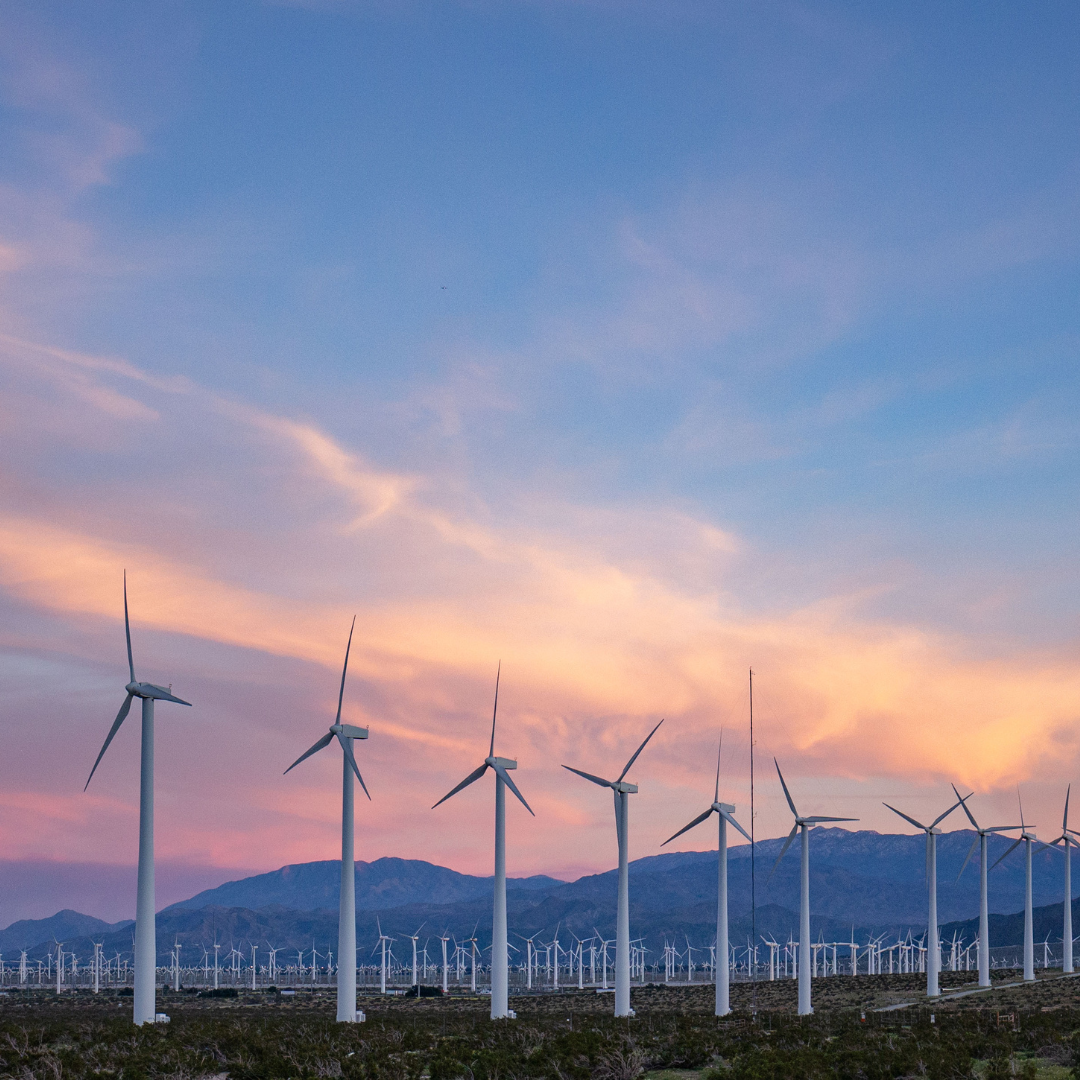
Wind Electricity
Generation
Wind electricity is generated using wind turbines, which are large machines that harness the wind's kinetic energy and convert it into electrical energy.
The process of generating wind electricity typically involves three stages: capturing the wind, converting the wind's kinetic energy into mechanical energy, and converting the mechanical energy into electrical energy.
The first stage involves capturing the wind using the wind turbine's rotor blades. The rotor blades are shaped like airfoils, and as the wind blows over them, they turn, capturing the wind's kinetic energy.
The second stage involves converting the wind's kinetic energy into mechanical energy. This is done using a shaft that connects the rotor blades to a generator, typically located in the nacelle or the housing at the top of the wind turbine tower.
The final stage involves converting mechanical energy into electrical energy. This is done using an alternator, which converts the mechanical energy into alternating current (AC) electricity. The AC electricity is then sent to a transformer, which converts it into direct current (DC) electricity, and finally into usable AC electricity.
Wind turbines can be installed onshore, in rural or semi-rural areas, or offshore, in the ocean. Onshore wind turbines are typically smaller and installed in areas with moderate to strong wind speeds. Offshore wind turbines are typically larger and installed in areas with strong, consistent wind speeds, such as coastal regions.
Overall, generating wind electricity involves capturing the wind, converting the kinetic energy of the wind into mechanical energy, and finally converting the mechanical energy into electrical energy. By harnessing wind power, wind turbines provide a clean and renewable energy source, helping to reduce dependence on fossil fuels and protect the environment.
Location
Wind turbines generate electricity by harnessing the kinetic energy of wind. The wind turns the blades of the turbine, which in turn rotates a shaft connected to a generator. The generator converts the mechanical energy of the rotation into electrical energy, which can then be stored or used immediately.
The efficiency of wind turbines is largely dependent on wind speed. The faster the wind speed, the more energy the turbine can generate.
Wind turbines can produce significant electricity in areas with high wind speeds. Coastal areas and regions with strong prevailing winds are ideal for wind turbines because they can generate electricity consistently and reliably.
However, wind turbines can still generate electricity in areas with lower wind speeds, although the efficiency may be reduced. The same wind turbine efficiency depends on many factors, such as the turbine's design, the tower's height, and the blades' size.
Wind turbines may be designed with longer blades or placed on taller buildings to maximize efficiency in areas with lower wind speeds. Additionally, wind turbines may be combined with other forms of renewable energy, such as solar panels, to provide a consistent power source even when wind speeds are low.
Cost
Wind energy has become increasingly cost-competitive in recent years, making it an attractive option for many countries looking to transition to renewable energy sources.
Due to technological advances and increased production, wind turbine prices have fallen significantly over the past decade. As a result, wind energy is now one of the most affordable renewable energy sources.
However, the cost of installing wind turbines varies depending on the location and the type of turbine used. Onshore wind turbines are generally less expensive to install compared to offshore wind turbines.
This is because offshore wind turbines require specialized equipment and installation techniques, making them more complex and expensive.
The cost of installing offshore wind turbines can be several times higher than that of installing onshore wind turbines due to the additional expenses associated with building and maintaining offshore infrastructure. In addition to installing wind turbines, ongoing operating and maintenance costs are associated with wind energy systems.
These costs include regular inspections, repairs, equipment replacements, and securing and managing the wind farm site. Despite these costs, wind energy is still considered a cost-effective renewable energy source, especially compared to traditional energy sources such as coal and natural gas.
Storage
Like most forms of renewable energy, wind energy is variable and dependent on weather conditions. Unlike fossil fuels, which can be stored and used as needed, wind electricity must be generated and used as it is produced.
This can make wind energy less reliable and consistent than traditional energy sources, as the amount of electricity generated by wind turbines can vary depending on wind speed and other weather conditions.
This variability can be a challenge when integrating wind energy into the grid, as it can be difficult to predict the amount of electricity produced by wind turbines at any given time.
To address this issue, wind energy may be combined with other forms of renewable energy, such as solar or hydropower, to provide a more consistent and reliable power source.
In addition, energy storage systems, such as batteries, can store excess wind electricity and make it available when needed. However, the cost of energy storage systems can be high, and their effectiveness can be limited by the amount of electricity stored. As a result, energy storage systems are not always a practical solution for managing the variability of wind energy.
Despite these challenges, wind energy is still considered a valuable renewable energy source, as it can provide clean and sustainable power when available. With technological advances and energy storage systems, wind energy will likely become an even more important energy source.
Advantages
Wind energy is also a clean, renewable, and non-polluting source of energy, producing no emissions or greenhouse gases. Wind energy can generate electricity for homes, businesses, and entire communities, helping reduce dependence on fossil fuels and promote energy independence and security.
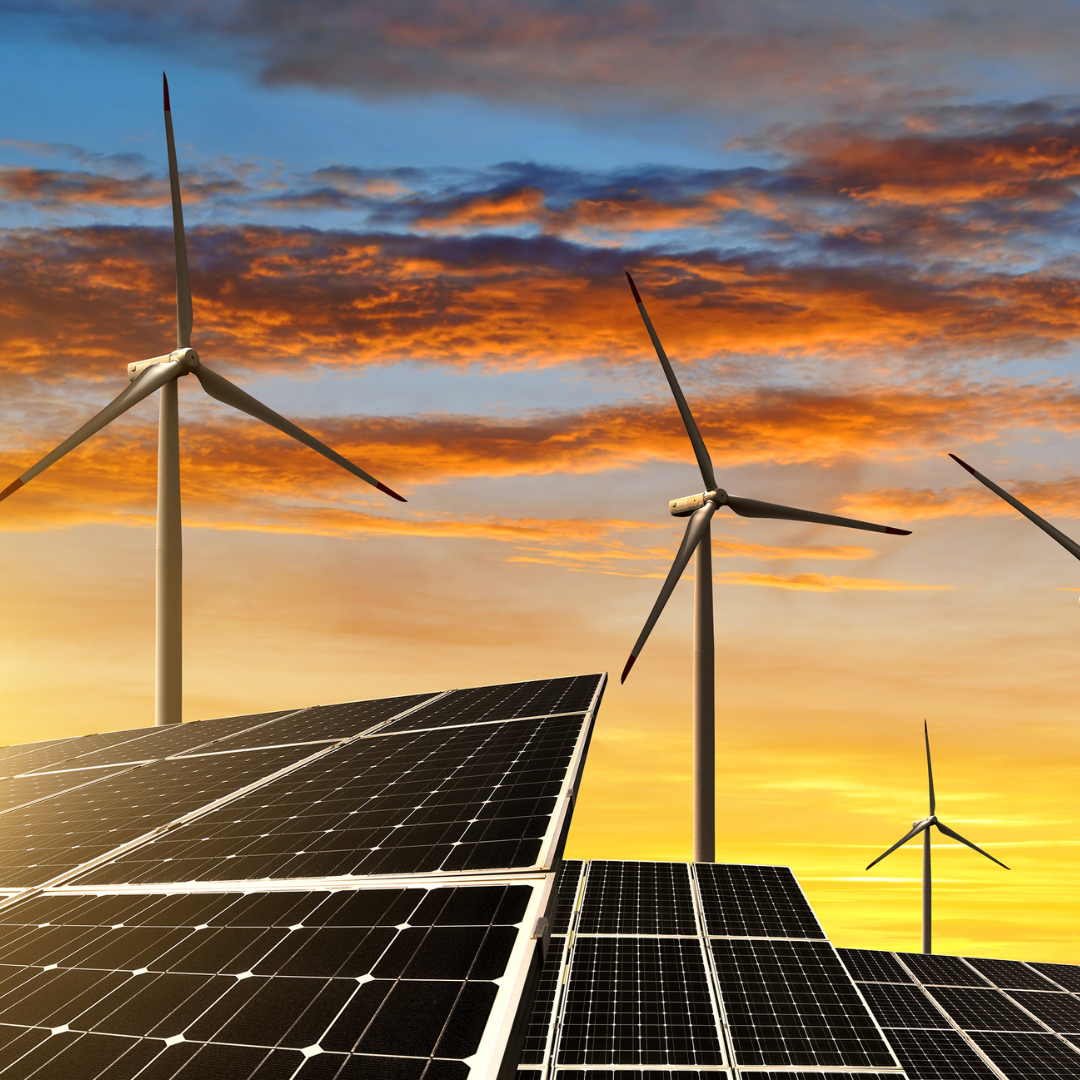
Conclusion
In conclusion, both solar energy and wind electricity are valuable sources of renewable energy with their own unique advantages and disadvantages. While solar energy is abundant, reliable, and cost-effective, it is dependent on sunlight.
On the other hand, wind electricity can be generated in areas with high wind speeds, and its cost has decreased in recent years. Still, its efficiency can vary depending on weather conditions. Both energy sources can be used together to provide a more consistent and reliable power source.
I trust you enjoyed this article on Solar Energy vs Wind Electricity. Please stay tuned for more blog posts to come shortly. Take care!
JeannetteZ
Your Opinion Is Important To Me
Thoughts? Ideas? Questions? I would love to hear from you. Please leave me your questions, experience, and remarks about this article on Solar Energy vs Wind Electricity in the comments section below. You can also reach me by email at Jeannette@Close-To-Nature.org.
Disclosure
This post may contain affiliate links. I earn from qualifying purchases as an Amazon Associate and other affiliate programs. Please read my full affiliate disclosure.
You might also enjoy these blog posts:
15 Best Vegetables To Grow In Your Container Garden
All About Wild Turkeys – A Large Shy Bird
I did the keyword research for this blog
post in Jaaxy. Click on the banner
below and try it yourself for free.

